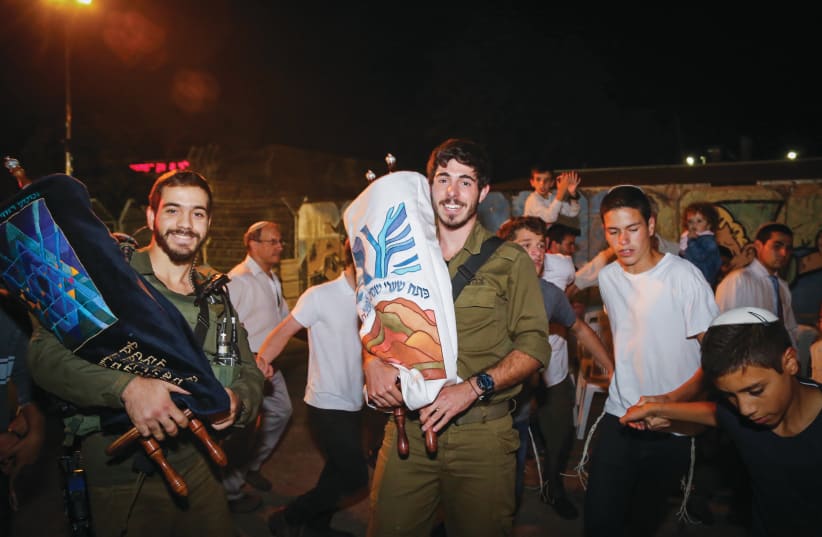The hakafot, the dances with the Torah scroll in the synagogue, are the most prominent part of Simhat Torah. All around the Jewish world, the holiday of Simhat Torah is characterized by joyous dancing, shared cups of l’chaim, and spirited congregational singing. The Torah scroll is at the center of all this celebrating, as we hug it, kiss it and dance around it.
This celebration encompasses all layers of society, young and old, rich and poor, learned and less learned. This phenomenon of a nation that breaks into unbridled dancing around a book with an outpouring of love is not found elsewhere. Other nations have parades and celebrations, but this sort of wild dancing and rejoicing is unique to the Jewish holiday of Simhat Torah.
The character of this special day is rooted in the Jewish nation’s culture. We can learn something about it from reading the description of Simhat Torah in Moscow of 1967. Remember, this was after half a century of communist rule that worked tirelessly to eradicate religious culture.
This is what the emissary of the Zionist organization to the Soviet Union, Mordechai Neustadt, wrote for the Davar newspaper: “The doors of the holy ark opened. The excitement grew. The old rabbi, the head of the community, began with the traditional verse Ata horeta lada’at [“Unto you (Israel) it was shown”]. The moment of taking the Torah out arrived. Enthusiastic singing erupted not only from open throats but from excited hearts. The parade of hakafot is swallowed in a tremendous human maelstrom. Many in the congregation make desperate attempts to get closer to the bimah [podium] to merge with the hakafot.... The happy ones who were privileged to do so kiss the Torah scroll.” Even in the worst situations, in the depths of despair in the Warsaw Ghetto in 1942, the holiday of Simhat Torah was celebrated. This is the description given by one of the survivors: “When the worshipers walked heavily with the Torah scrolls and walked around in pseudo-hakafot, suddenly, Yehuda Leib Orlean jumped up to a child, hugged him with the Torah scroll, squeezing both the child and the Torah, and in a heart-wrenching cry chanted repeatedly, ‘A young Jew with the holy Torah!’ As he danced with the child and the Torah scroll with hassidic enthusiasm, he repeated his cry, ‘A young Jew with the holy Torah!’” What was it that caused this breakout of joy? What is the source of the fire that burns so bright on Simhat Torah, emitted from the Jewish heart, leading legs to dance and mouths to sing? What is written in the Torah that we dance with? Commandments, laws, prohibitions? Is this what we dance with? Can we even imagine a person wanting to dance with a book of laws in his arms?
This is the day on which the Jewish nation completes the yearly cycle of reading from the Torah. Every Shabbat, we read one parasha, one portion from the Torah, and on Simhat Torah we read the final portion of Deuteronomy – Vezot Habracha, and begin immediately with the first parasha – Bereishit. The Jewish nation celebrates with the Torah scroll and by doing so acknowledges that the secret of its existence as a nation, its survival and the wonder of its being, is this book.
In the Maariv evening prayer, we say the following words: “Therefore, O Lord our God, when we lie down and when we rise up, we will mediate upon Your statutes and rejoice in the words of Your Torah and in Your commandments forever, for they are our life and the length of our days and upon them we will meditate day and night.” Elsewhere, in the slihot prayers of Yom Kippur, we declare: “There is nothing else - just this Torah.” The awareness that the Torah is not merely a book of laws, but that it is the foundation of the Jewish nation’s existence, is what leads us to rejoice with words of Torah, a joy that a stranger cannot grasp, a love that has no words but which causes our hearts to overflow. \\The writer is rabbi of the Western Wall and Holy Sites.
